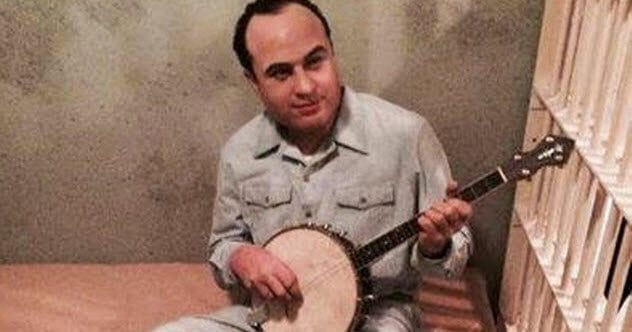Al Capone. The name alone brings images of a powerful, ruthless gangster who ruled Chicago with an iron fist. We’ve seen him in movies and TV shows, always portrayed as the ultimate crime boss. But what about the Al Capone we don’t know? The man behind the legend, especially in his final, fading years? It’s a chapter of his life shrouded in mystery, far from the Thompson guns and speakeasies. Get ready to explore a different side of Scarface, a story of a once-mighty figure brought low by illness, imprisonment, and the ghosts of his past.
10 The End Of Luxury
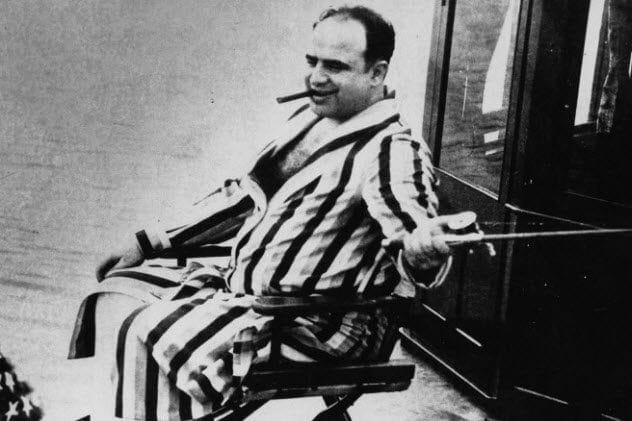
Many tales paint Al Capone’s last years with lingering glamour. One popular myth suggests he filled his swimming pool with fish just so he could enjoy catching them. The truth? Capone was struggling financially. The man who once raked in an estimated $40 million a year was down to about $600 a week. This money came from former associates in the Chicago “Outfit.”
His days of extravagant living were long gone. Instead, he found simple joys, like walking his property with his granddaughters, searching for butterflies. This dramatic fall was clear even at his death. Few friends attended his modest funeral in the winter of 1947. His wife, Mae, stayed in their Palm Island home for only five more years. Financial troubles forced her to sell it. Before she passed away in 1986, Mae burned all of Al’s letters written from prison. This act erased a personal side of the man known worldwide as Scarface.
9 The Convict Orchestra

When Capone was imprisoned at Alcatraz, inmates could buy musical instruments if they wanted to join the convict orchestra. Though Capone wasn’t known for his musical talent, he bought several instruments. He had a banjo that he often played by himself in a corner, even though he was technically part of the band.
Why the solo act? Other inmates didn’t like him. They felt he was always trying to take over the orchestra. This led to many arguments, much like high school squabbles. Things got so tense that the other men refused to play if Capone tried to join in. One Saturday, the animosity exploded. Harmon Waley, a convicted kidnapper whom Capone had been hassling, attacked Capone from behind. This sparked a brawl where the whole orchestra ganged up on Capone. Chairs flew, and punches were thrown. Guards quickly stepped in, saving Capone from a potential mob beating. Ironically, Capone was the one punished for this fight, his “second fight on the Rock.”
8 Mental Disturbances
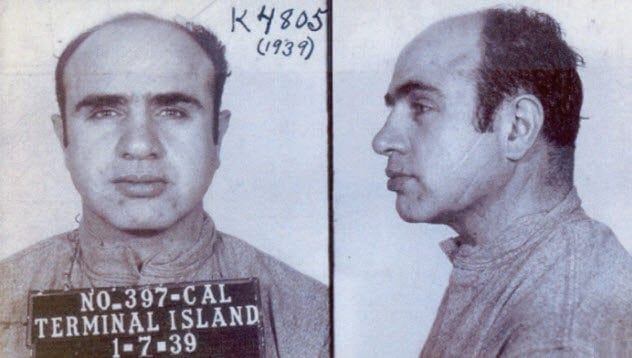
Al Capone was known for his affairs with women, even after marrying Mae in 1918. This lifestyle led to him contracting syphilis. He avoided treatment, fearing Mae would find out about his cheating. Sadly, this decision meant he eventually passed the disease to his wife.
As years went by without treatment, Capone’s mental health seriously declined. Prison doctors at Alcatraz noticed his worsening condition. He had increasingly strange and violent outbursts, which they called “intermittent mental disturbances.” After his release on November 16, 1939, Capone was too mentally unwell to return to his role in the “Outfit.” He never publicly returned to Chicago. By 1946, a psychiatrist stated Capone had the mental capacity of a 12-year-old child. He spent his final days at his Palm Island estate, often in pajamas by the pool, having imaginary chats with dead colleagues and old enemies.
7 Lawsuits And Injections
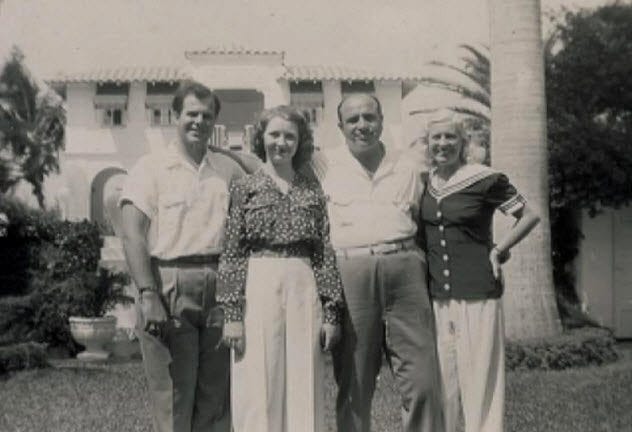
In July 1938, the Chicago Tribune published a shocking report about Capone’s decline. A city that only knew him as powerful and ruthless now saw a different picture: a broken man whose mind was failing. The paper noted that while Capone was sometimes a nuisance in prison, he was no longer violent and didn’t need a straitjacket. He was often in a daze.
However, this softer image didn’t sit well with everyone. When Capone moved to Florida, Miami Beach officials sued him. They declared his presence “a menace to the safety and well-being of residents,” fearing a return of violence and corruption. For Capone, whose mind was already slipping, such lawsuits were likely insignificant. He received the best medical care available, but some treatments were questionable. For instance, doctors tried to fight his syphilis by raising his body temperature. To do this, they gave him injections to induce malaria. This deliberate infection proved useless against his advanced illness.
6 Cocaine Withdrawal

Beyond the untreated syphilis ravaging his brain, Al Capone faced another battle when he arrived at Alcatraz: severe cocaine withdrawal. His addiction to the drug, sometimes called “booger sugar,” was so intense that it had eaten away at his nasal septum, creating a noticeable hole. For a long time, many, including the prison’s doctor, mistakenly blamed syphilis for this damage.
It wasn’t until nearly 60 years later that the truth came out. Dr. Jack Shapiro, a medical consultant, examined Capone’s X-rays from June 4, 1938. The X-rays showed no sign of disease in Capone’s sinuses. This finding highlighted just how severe the gangster’s cocaine addiction had been. If the crippling effects of syphilis weren’t enough for a man who once controlled an entire city, he now also endured the agony of withdrawal. While it’s hard to feel sympathy for such a ruthless figure, it’s clear he suffered immensely after his conviction.
5 Capone’s Entourage At The Hospital

After his release from Alcatraz, a very sick Al Capone sought treatment at the prestigious Johns Hopkins Hospital. However, the hospital’s board, worried about his infamous reputation, refused to admit him. He faced another rejection in Guilford. Finally, Union Memorial Hospital in Baltimore agreed to take him in.
Upon his arrival, Capone didn’t just get a room; he took over the hospital’s entire fifth floor. He brought a full entourage with him. This included bodyguards, a personal masseur, his barber, numerous family members, and even a food taster to make sure no one tried to poison him. For the next five weeks, Dr. Joseph E. Moore looked after Capone. Capone was apparently very grateful for the care he received at the only hospital that would admit him. As a token of his thanks, he donated two Japanese weeping cherry trees. Amazingly, one of these trees still stands outside the hospital’s entrance today, nearly 80 years later.
4 Penicillin

By the early 1940s, Capone was in bad shape. He was significantly overweight, struggled with coordination, and suffered from seizures that resembled epilepsy. He would often walk quickly with jerky movements, whistling, humming, and talking to people who weren’t there.
In 1942, penicillin became available. However, World War II meant the War Production Board strictly controlled its supply, making it very hard to get. Luckily for Capone, Dr. Joseph E. Moore, who had treated him before, managed to obtain the new antibiotic. He administered it to his famous patient. This made Al Capone one of the very first syphilis patients in medical history to be treated with penicillin. Unfortunately, by this time, Capone’s mental decline was too far gone. No drug could undo the damage. However, the penicillin did manage to stop his symptoms from getting worse for a while.
3 Torture And Special Privileges

Alcatraz was no luxury resort. Back then, it was the definition of “hard time.” Stories circulated about harsh discipline from guards and Warden James Johnston. Inmates reportedly faced beatings, starvation, and being thrown into the “dungeon,” a dark solitary confinement cell.
Amidst these grim conditions, many inmates felt that Al Capone was treated differently. They claimed he was the only prisoner who didn’t suffer such brutal handling. They believed he received special privileges because of his political connections. In one reported incident, an inmate named John M. Stadig said he and another prisoner were chained and starved in the dungeon. Their crime? Circulating a petition asking for reading materials and one movie a month. This harsh punishment apparently even led Capone to side with Stadig. He joined other prisoners in a strike to protest the abuse. Despite Capone’s supposed support, the idea that he got special treatment angered fellow prisoners. They described Alcatraz as a “hell hole from which men are willing to risk their lives to escape.” Prison officials strongly denied Stadig’s claims, which were originally published in 1934. The government, however, always maintained that Alcatraz was not meant for rehabilitation.
2 Final Arrangements
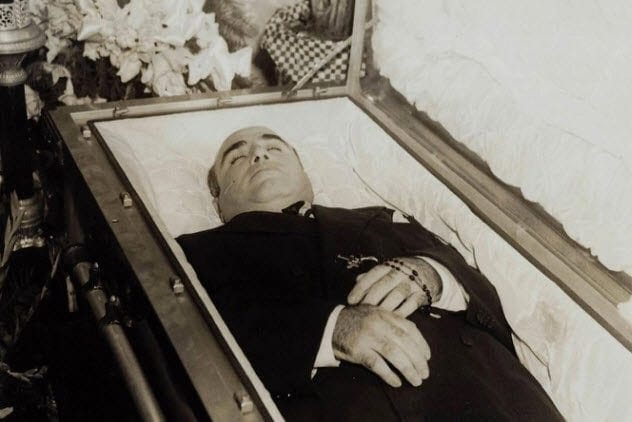
Al Capone died on January 25, 1947. Until his death, the press constantly staked out his Florida home, hoping for a final photo of the infamous mobster. To avoid a media circus, Capone’s family made secret arrangements. His body was transported non-stop from his estate to Chicago in a regular car, driving up Highway 41.
That evening, Capone’s son, Sonny, officially announced his father’s passing to the press. A hearse arrived at the home, but it left with an empty casket inside. Most people there, except for Capone’s close family, didn’t know a fake funeral was held the next day. Some prominent Florida figures, including Desi Arnaz, even attended to pay their respects. Meanwhile, the Capone family traveled to Chicago by train, with reporters following them. Members of the Outfit spread the word about the real funeral details. After a mass at Holy Name Cathedral in Chicago, Al Capone was buried at Mount Olivet Cemetery on February 1. This was three days before the “scheduled” date given to the media. However, this wasn’t his final resting place. After his mother died in 1952, his casket was moved to Mount Carmel Cemetery, where he remains today.
1 Capone vs. Lucas
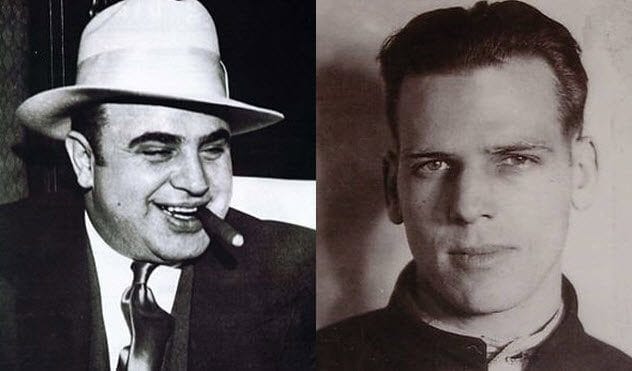
James “Tex” Lucas was a lifelong criminal. He caused trouble wherever he went, bringing misery to many. His crimes eventually landed him in Alcatraz in 1935, where he continued his disruptive behavior. He was involved in various schemes, including a violent escape attempt in 1938 that resulted in the death of Officer Royal C. Cline.
Despite his long list of offenses, Lucas is perhaps most famous for one thing: he nearly killed Al Capone. On June 23, 1936, Capone was in the shower room with Lucas. Lucas had managed to get his hands on half of a pair of scissors. He used this makeshift weapon to slash Capone viciously several times. Capone suffered chest wounds and defensive cuts on his hands, but he survived the attack. Lucas’s reason for the assault? He claimed Capone had threatened to kill him. Given Capone’s violent history, this was a very believable claim. Although Lucas had received a life sentence for murder, the U.S. judicial system paroled him in 1958. He lived as a free man for another 40 years before dying on November 28, 1998.
Al Capone’s final years paint a picture far removed from his kingpin days. From a feared crime lord to a frail man battling his own mind and body, his story is a stark reminder of how fortunes can change. The power, the wealth, the fear he once commanded all faded into a quiet, troubled end.
What fact about Al Capone’s final years surprised you the most? Do you see him differently now? Share your thoughts in the comments below!


